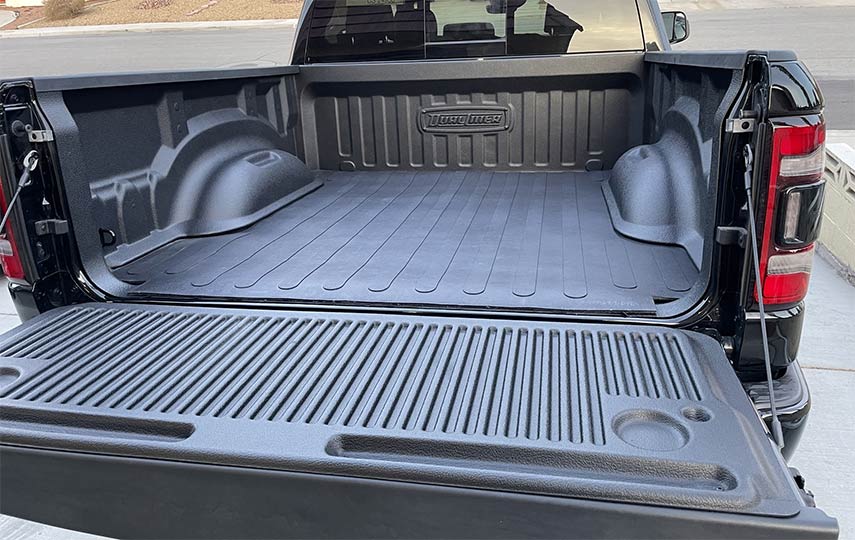If you’re thinking about buying a trailer, camper or boat, there are a few things to consider. The first thing is you’ll need to find out if your vehicle can tow, what its tow rating is, and which hitches work with it.
Secondly, you should consider what you’ll be towing, how big the trailer should be, and the equipment you’ll need.
Lastly, you’ll need to understand how towing changes your vehicle’s handling, stopping, and overall performance.
That’s a lot to think about, which is why we created this towing guide.
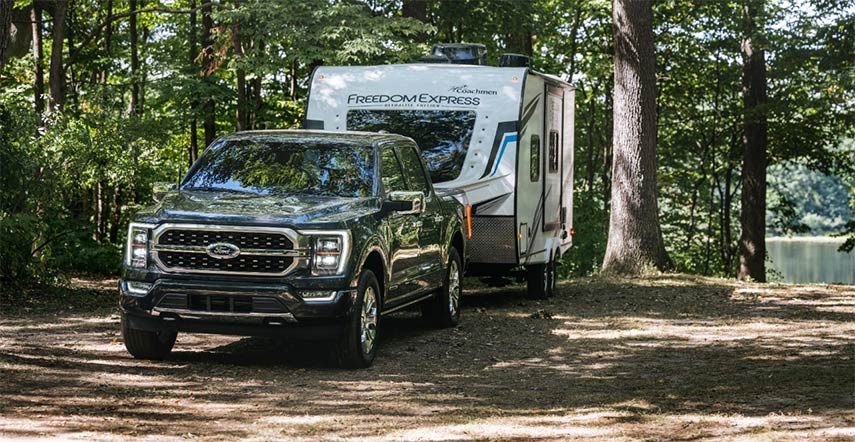
Tow Vehicle and Trailer Specs
If you want to tow a trailer, here’s how to get started: First, check your owner’s manual to see if your vehicle can tow a trailer, and what its tow rating is.
Tow ratings cover the individual, combined, and fully loaded weights at which the tow vehicle can safely pull a trailer.
Here are the ratings you should look for:
- Towing capability is the weight a vehicle can tow. Engine power, transmission type, number of drive wheels, axle ratio, and wheelbase length all can affect this rating. If you are planning to buy a vehicle that you will be using to tow, review the manufacturer’s towing guides for good towing combinations.
- Gross Vehicle Weight Rating (GVWR) is the maximum that the tow vehicle can weigh when fully loaded.
- Gross Combination Weight Rating (GCWR) is the maximum combined weight of the tow vehicle including passengers, equipment, fuel, etc., as well as the trailer.
- Gross Axle Weight Rating is the maximum weight that a single axle can carry.
We go into much greater detail about these ratings in this article.
Next, you need to think about your current and future towing needs. This is important because you may only want a small utility trailer now, but if you buy a boat later, that small trailer won’t work anymore. This will help to narrow down the category and class of the trailer, as well as how much weight it can handle.
Trailer classes are separated by:
- Gross Trailer Weight, the maximum weight of the trailer and its cargo combined.
- Gross Tongue Weight, the maximum weight exerted on the hitch ball by the coupler (usually around 10% of the Gross Trailer Weight).
- Hitch type, which includes weight-carrying and weight-distributing hitches.
Keep in mind that trailer weight can be tricky: Some manufacturers list the dry weight of their trailers, but you’ll need to know the Gross Trailer Weight to accurately determine your total weight. If you haven’t bought the trailer and/or what you’ll be towing with it yet, research their weights, consider any extras that might go on the trailer, and add them all up.
You may want to look into towing-specific packages and vehicle upgrades, too. They can include enhanced engine and transmission cooling, trailer wiring harnesses, upgraded electrical, suspension and braking systems, extended mirrors, trailer hitch receivers, and more.
Finally, your vehicle and trailer must have a ball mount and ball, as well as the right parts like trailer brakes and safety chains to meet state towing laws.
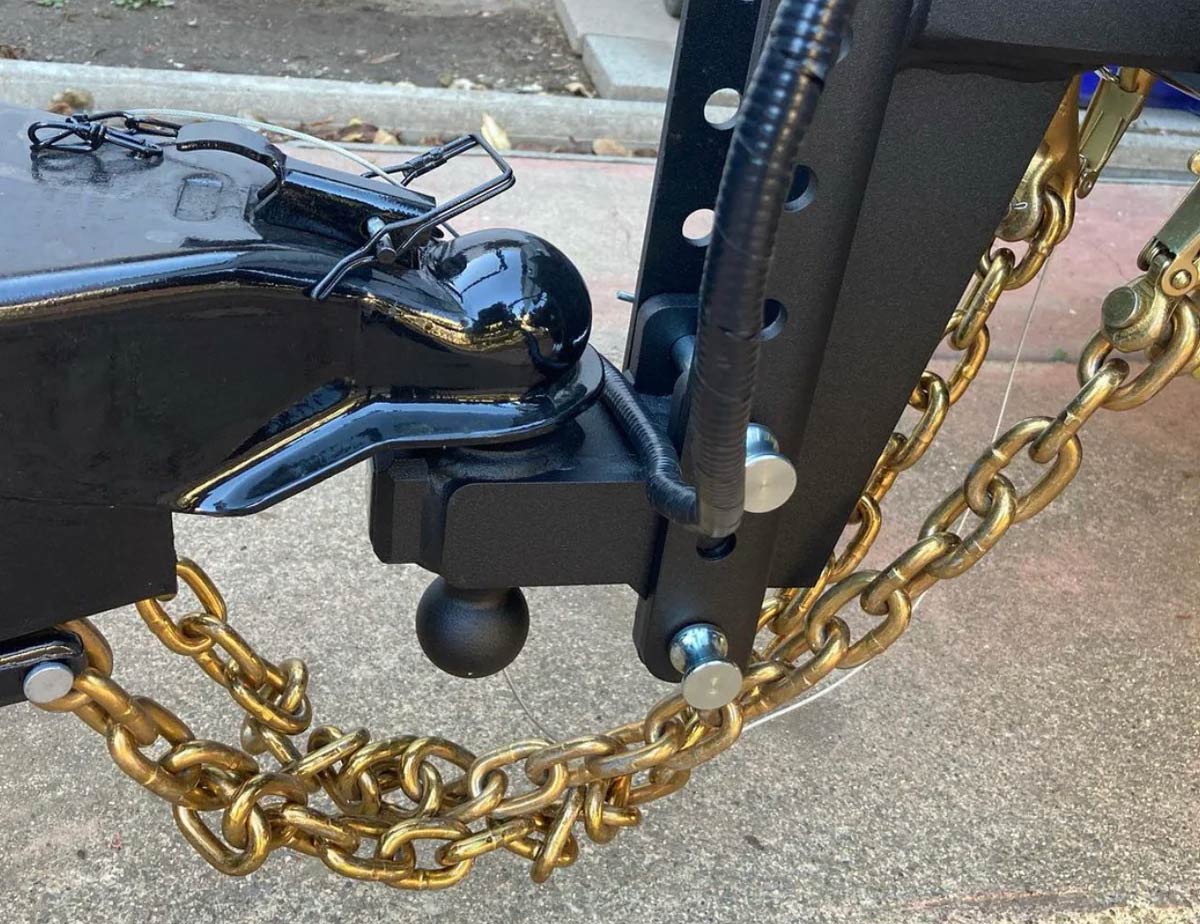
Safety Chains. Source – BulletProof Hitches
Trailer Classes and RV Trailer Types
There are four categories of trailers: flatbed or open trailers, boat trailers, enclosed trailers, and recreational vehicle trailers.
The four trailer classes and three RV trailer types most suited to general towing duties are listed here.
Trailer Classes
|
Class I – Light-Duty – Up to 2,000 lb. Gross Trailer Weight |
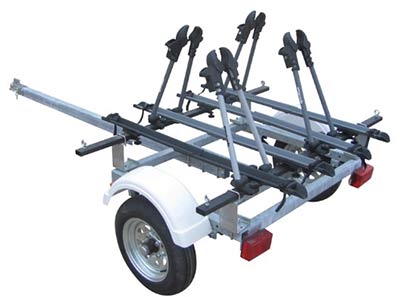 |
|
Class II – Medium-Duty – 2,001-3,500 lb. Gross Trailer Weight |
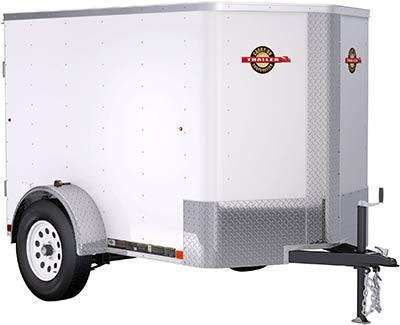 |
|
Class III – Heavy-Duty – 3,501-5,000 lb. Gross Trailer Weight |
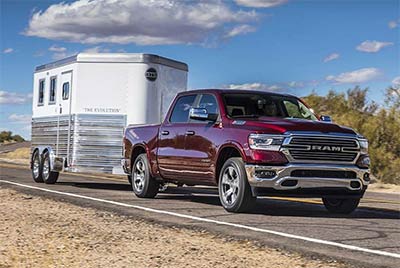 |
|
Class IV – Extra-Heavy-Duty – 5,001-12,000 lb. Gross Trailer Weight |
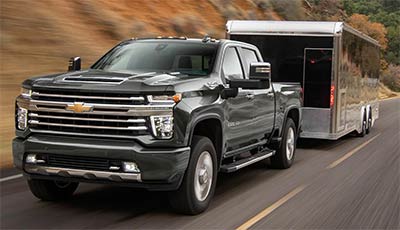 |
RV Trailers
|
Folding Camping Trailer – Relatively inexpensive |
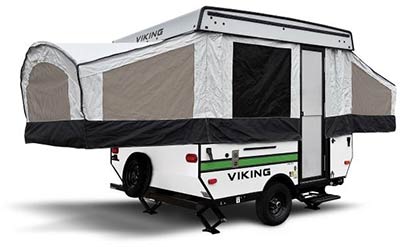 |
|
Conventional Travel Trailer – Various levels of roominess, comfort, and luxury |
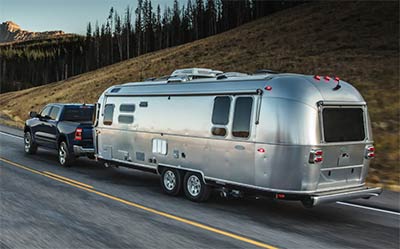 |
|
Fifth-Wheel Trailer – Same types of accommodations as a conventional travel trailer |
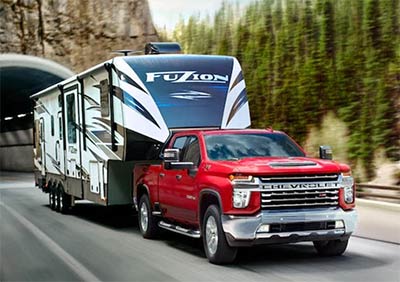 |
Towing Equipment
These are the items that you should consider using when towing.
Trailer wiring harness
Some vehicles equipped with a factory-installed “Trailer Tow Package” include a trailer wiring harness and a wiring kit. The kit includes one or more jumper harnesses (to connect to your trailer wiring connector) and installation instructions. If your towing package did not include a hitch or wiring, be sure to ask your local dealer to provide this equipment if it is necessary for your towing needs.
Hitch
If you have questions after reading the Trailer Class and RV Trailer Types section, someone at your local dealer can recommend the configuration that’s right for your towing needs.
Trailer brakes
Most states require a separate braking system on trailers with a loaded weight of over 1,500 pounds. For your safety, it’s recommended that a separate functional brake system be used on any towed vehicle, including dolly-towed and tow bar-towed.
Electronically controlled brakes
These brakes typically have a control box installed within reach of the driver, and additional wiring for electric power. They usually can be applied manually or automatically.
Surge brakes
These independent hydraulic brakes are activated by a master cylinder at the junction of the hitch and trailer tongue. They are not controlled by the tow vehicle’s brake system. The tow vehicle’s hydraulic brake system should never be connected directly to the trailer’s hydraulic system.
Trailer lights
Make sure the trailer is equipped with lights that conform to all applicable government regulations. Do not directly connect a trailer lighting system to the vehicle’s lighting system. See a local RV dealer or rental trailer agency for correct wiring and relays for the trailer and heavy-duty flashers.
Safety chains
Always use safety chains when towing. They help retain the connection between the towing and towed vehicle if the trailer coupling or ball separates. See your owner’s manual for safety chain attachment information.
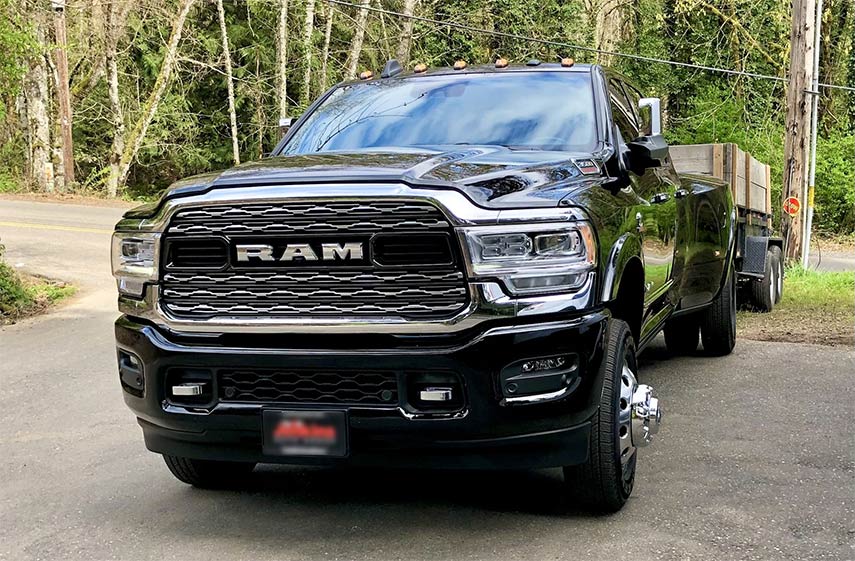
Trailer Towing Tips
Before you tow
- Drive your new vehicle at least 1,000 miles before you tow a trailer
- Know your GCWR, and stay at or under it while towing
Distribute the weight
- The trailer must be properly loaded and balanced for optimum handling
- Keep the center of gravity as low as possible for the best handling
- Approximately 60% of the cargo weight should be in the front half of the trailer, with 40% in the rear
- The load should also be balanced from side to side for good handling and even tire wear
- The load must be firmly secured to prevent shifting during cornering or braking, which could result in a sudden loss of control
- Trailer tongue load should be 10-15% of the total loaded trailer weight (15-25% for fifth-wheel or gooseneck hitches)
Braking
- Allow considerably more distance for stopping with a trailer attached
- If you have a manual brake controller, “lead” with trailer brakes, if possible
- If your trailer starts to sway, gradually apply the brake pedal. If your vehicle features a trailer brake controller, the sliding lever should be used only for manual activation of the trailer brakes when adjusting the gain. Misuse such as application during trailer sway could cause instability of the trailer and tow vehicle
Towing on hills
- Downshifting the transmission to a lower gear can help when braking on downgrades, and it also provides added power for climbing hills
Parking on a slope
Whenever possible, vehicles with trailers shouldn’t be parked on a grade. If it’s unavoidable, always place blocks or wheel chocks under the trailer’s wheels:
- Apply the brake pedal and hold.
- Have another person place the wheel chocks under the trailer wheels on the downgrade side.
- Once the wheel chocks are in place, release the brake pedal, ensuring the chocks will hold the vehicle and trailer.
- Apply the vehicle’s parking brake.
Shift the vehicle itself into P (Park) and make sure it is latched there. If your vehicle has a manual transmission, put the gearshift lever in R (Reverse). If your vehicle has four-wheel drive, make sure the transfer case is not in N (Neutral).
Leaving the slope
- Apply the brake pedal and hold.
- Start the engine in P (Park), or if your vehicle has a manual transmission, start it in N (Neutral).
- Shift the transmission into gear and release the parking brake.
- Release the brake pedal and move the vehicle uphill to free the wheel chocks.
- Apply the brake pedal and hold while another person retrieves the chocks.
- Drive away.
Accelerating and passing
The added weight of the trailer can dramatically decrease the acceleration of the towing vehicle.
- Be cautious about trying to merge into traffic or pass another vehicle
- When passing, be sure to allow extra distance for your trailer to clear the other vehicle safely before pulling in front of it
- Signal and pass on level terrain with plenty of clearance
- If necessary, downshift for improved acceleration
Driving with an automatic overdrive transmission
If your vehicle has an automatic overdrive transmission, towing may cause excessive shifting between overdrive and the next lower gear—especially in hilly areas. If this occurs, we recommend locking out the overdrive gear.
This eliminates unnecessary shifting and can provide steadier performance (see your owner’s manual for more information). If you don’t notice excessive shifting, use the overdrive gear to optimize fuel economy.
Driving with speed control
When driving uphill with a heavy load, significant speed drops may occur. A drop of more than eight to 14 mph will cancel the cruise control on most vehicles. If this happens, manually accelerate until the terrain levels off.
Tire pressure
Proper tire inflation is even more important when towing a trailer. Check the proper tire inflation for your vehicle and the trailer, and ensure they are not under or overinflated.
High-altitude operation
Gasoline engines lose power at a rate of 3 to 4% per 1,000 feet of elevation, so keep in mind that your towing capacity will be reduced in higher elevations, and plan accordingly.
For additional information about towing safety, tips and checklists, click here to view a PDF from the National Highway Traffic Safety Administration. You save a copy to your computer for future reading.
Towing can be tough on a truck and so can cargo rolling around in your truck bed. Protect your pickup bed with truck bed liners from DualLiner. DualLiner bed liners are constructed to fit your entire truck bed with custom interlocking parts and Zero Skid rubber mats.
